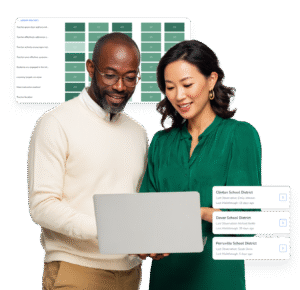In today’s rapidly evolving educational landscape, educators are constantly seeking innovative teaching approaches to enhance student engagement and foster critical thinking skills. One such approach that has gained significant attention is mosaic learning. This transformative method allows students to piece together different fragments of knowledge across various subjects, creating a cohesive and immersive learning experience. By immersing students in a multidisciplinary learning environment, mosaic learning promotes creativity, collaboration, and problem-solving skills, preparing them for the challenges and opportunities of the 21st century.
Understanding Mosaic Learning
At its core, mosaic learning is an instructional strategy that combines diverse pieces of information, concepts, or skills to create a comprehensive understanding. Just as an artist meticulously arranges small tiles of different colors and shapes to create a visually stunning mosaic, educators integrate different subjects, real-world scenarios, and hands-on activities to help students construct meaning and connect the dots between different areas of knowledge.
The Concept of Mosaic Learning
Mosaic learning is based on the belief that knowledge is not compartmentalized into separate subjects but interwoven and interconnected. By breaking down barriers between disciplines, students are empowered to see the bigger picture and develop a holistic understanding of the world around them. This approach encourages them to adopt a multidimensional mindset, enabling them to think critically, solve complex problems, and make innovative connections.
The Importance of Mosaic Learning in Education
Mosaic learning plays a pivotal role in education as it helps bridge the gap between theoretical concepts and practical applications. By engaging students in authentic, cross-curricular projects, educators enable them to recognize the interconnectedness of various disciplines and appreciate the relevance of what they learn. Furthermore, mosaic learning fosters a sense of curiosity and promotes lifelong learning, empowering students to become adaptable and versatile individuals in an ever-changing society.
Imagine a classroom where students are not confined to the boundaries of traditional subjects, but instead, they embark on a journey that transcends disciplinary limitations. In this classroom, a science experiment seamlessly integrates with a history lesson, as students explore the impact of scientific discoveries on historical events. They analyze the intricate relationship between scientific advancements and societal progress, gaining a deeper understanding of how knowledge evolves and shapes our world.
Moreover, mosaic learning encourages students to step outside the confines of the classroom and actively engage with the real world. They embark on field trips that blend art, science, and culture, immersing themselves in the rich tapestry of human experience. By experiencing the interconnectedness of different aspects of life, students develop a heightened sense of empathy and appreciation for diversity, fostering a more inclusive and compassionate society.
Implementing Mosaic Learning in the Classroom
Integrating mosaic learning into your classroom can be an exciting and rewarding experience for both you and your students. By following a few key steps and utilizing the right tools and resources, you can create an immersive and dynamic learning environment that will leave a lasting impact.
Steps to Introduce Mosaic Learning
1. Identify themes or overarching concepts that can be explored through multiple disciplines. For example, a unit on sustainability could incorporate elements of science, mathematics, and social studies.
2. Collaborate with colleagues to identify potential connections between your subject areas. Discuss how you can align your lessons to create a cohesive and interdisciplinary learning experience.
3. Design engaging and authentic projects that allow students to explore different perspectives and apply their knowledge in real-world contexts. For example, students could work together to create a sustainable community plan.
Tools and Resources for Mosaic Learning
To effectively implement mosaic learning, it is important to have access to a range of tools and resources that support cross-curricular exploration:
- Digital platforms and learning management systems that facilitate collaboration and communication
- Data visualization tools to help students make connections and analyze complex information
- Real-world resources such as documentaries, guest speakers, and field trips to provide authentic learning experiences
- Creative materials and hands-on activities that allow students to express their understanding and creativity
Furthermore, incorporating technology into mosaic learning can greatly enhance the learning experience. For instance, virtual reality (VR) can transport students to different environments, allowing them to explore various cultures and historical periods firsthand. This immersive experience can deepen their understanding and empathy.
Additionally, gamification can be a powerful tool to engage students in mosaic learning. By turning lessons into interactive games, students become active participants in their own learning journey. This not only fosters a sense of ownership but also promotes critical thinking and problem-solving skills.
Moreover, community partnerships can play a significant role in mosaic learning. By collaborating with local organizations and experts, students can gain real-world insights and experiences. This can include mentorship programs, where professionals from different fields guide students through projects and provide valuable feedback.
Lastly, it is crucial to create a supportive and inclusive classroom environment for mosaic learning. Encourage open dialogue, respect diverse perspectives, and provide opportunities for students to share their unique insights. By fostering a sense of belonging, students will feel empowered to take risks and explore new ideas.
Benefits of Mosaic Learning
Mosaic learning offers numerous benefits that go beyond traditional classroom instruction. By embracing this approach, educators can create a dynamic and student-centered learning environment that enhances student engagement, fosters creativity, and develops critical thinking skills.
One of the key advantages of mosaic learning is its ability to cater to diverse learning styles and preferences. Students have the opportunity to explore topics through a variety of mediums, such as visual presentations, hands-on activities, group discussions, and multimedia resources. This multi-modal approach ensures that every student can find a method of learning that resonates with them, leading to a more inclusive and effective educational experience.
Enhancing Student Engagement through Mosaic Learning
By breaking the monotony of subject-focused learning, mosaic learning actively engages students by presenting them with real-world challenges and authentic tasks. Students are encouraged to take ownership of their learning, fostering a deep sense of motivation and curiosity. This active engagement leads to higher retention rates and a genuine passion for learning.
Furthermore, mosaic learning promotes collaboration and teamwork among students. Through group projects and interactive activities, students learn how to communicate effectively, share ideas, and work towards common goals. These collaborative experiences not only enhance social skills but also prepare students for the collaborative nature of the modern workforce.
Fostering Creativity and Critical Thinking
Mosaic learning nurtures creativity by encouraging students to think outside the box and make connections between seemingly unrelated concepts. By working on multidisciplinary projects, students are exposed to diverse perspectives and learn to appreciate the value of different ideas and approaches. Additionally, mosaic learning cultivates critical thinking skills by requiring students to analyze, evaluate, and synthesize information from various sources.
Moreover, mosaic learning helps students develop adaptability and resilience in the face of challenges. By engaging with complex problems that do not have straightforward solutions, students learn to embrace ambiguity, experiment with different strategies, and persevere through setbacks. These skills are essential for navigating an ever-changing world and preparing students for success in an unpredictable future.
Challenges and Solutions in Mosaic Learning
While mosaic learning holds tremendous potential, it is not without its challenges. Educators may encounter various obstacles during the implementation process. However, with careful planning and targeted strategies, these challenges can be overcome, paving the way for a successful mosaic learning experience.
Common Obstacles in Implementing Mosaic Learning
1. Time constraints: Mosaic learning requires careful coordination across multiple subjects, which can be challenging within the limitations of a traditional classroom schedule. Allocating dedicated time for collaboration and project-based activities is essential.
2. Lack of resources: Limited access to technology, materials, and external support can hinder the implementation of mosaic learning. Seeking partnerships with community organizations and exploring grant opportunities can help overcome these resource limitations.
Strategies to Overcome Mosaic Learning Challenges
1. Create a shared vision: Engage colleagues and administrators in conversations about the benefits of mosaic learning and its potential impact on student learning outcomes. By garnering collective support, you can overcome challenges more effectively.
2. Provide professional development opportunities: Equip educators with the necessary tools, training, and resources to implement mosaic learning successfully. Encourage collaboration and reflection to continuously refine instructional practices.
3. Embrace flexibility: Mosaic learning is an ever-evolving process. Embrace the flexibility to adapt and modify instructional methods based on student needs and feedback.
Measuring the Impact of Mosaic Learning
Assessing the impact of mosaic learning can be done through a combination of formative and summative assessment methods. It is essential to measure both the immediate and long-term effects of this instructional approach to ensure its effectiveness and make data-driven decisions.
Assessing Student Progress in Mosaic Learning
1. Formative assessments: Embed assessments throughout the learning process to monitor student progress, provide feedback, and identify areas for improvement. This can include self-reflection tasks, peer evaluations, and ongoing observations.
2. Summative assessments: Evaluate student understanding and achievement at the end of a mosaic learning project or unit. This can include performance-based assessments, presentations, or portfolios that showcase students’ interdisciplinary learning.
The Long-Term Effects of Mosaic Learning on Students
Mosaic learning goes beyond immediate academic gains. It equips students with transferable skills and competencies necessary for success in various areas of life. Some of the long-term effects include:
- Enhanced problem-solving abilities
- Improved collaboration and teamwork skills
- Enhanced critical thinking and analytical skills
- Increased creativity and innovation
- Developed adaptability and resilience
By embracing mosaic learning, educators can unlock the full potential of their students and prepare them for a rapidly changing world. Through interdisciplinary connections, authentic projects, and a focus on critical thinking, students become active participants in their own learning journey, equipped with the skills and knowledge to excel in the classroom and beyond.



